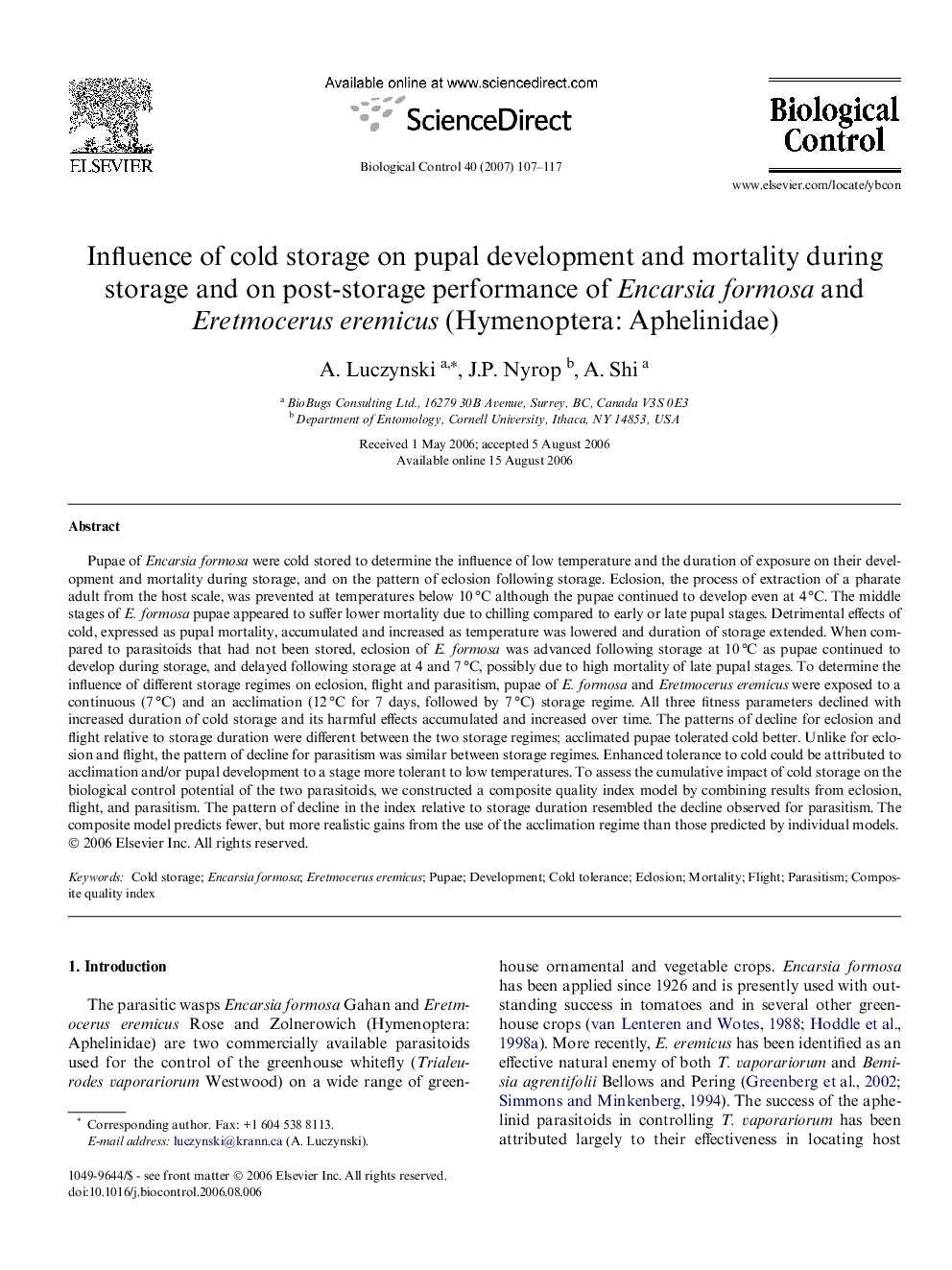| Article ID | Journal | Published Year | Pages | File Type |
|---|---|---|---|---|
| 4505308 | Biological Control | 2007 | 11 Pages |
Pupae of Encarsia formosa were cold stored to determine the influence of low temperature and the duration of exposure on their development and mortality during storage, and on the pattern of eclosion following storage. Eclosion, the process of extraction of a pharate adult from the host scale, was prevented at temperatures below 10 °C although the pupae continued to develop even at 4 °C. The middle stages of E. formosa pupae appeared to suffer lower mortality due to chilling compared to early or late pupal stages. Detrimental effects of cold, expressed as pupal mortality, accumulated and increased as temperature was lowered and duration of storage extended. When compared to parasitoids that had not been stored, eclosion of E. formosa was advanced following storage at 10 °C as pupae continued to develop during storage, and delayed following storage at 4 and 7 °C, possibly due to high mortality of late pupal stages. To determine the influence of different storage regimes on eclosion, flight and parasitism, pupae of E. formosa and Eretmocerus eremicus were exposed to a continuous (7 °C) and an acclimation (12 °C for 7 days, followed by 7 °C) storage regime. All three fitness parameters declined with increased duration of cold storage and its harmful effects accumulated and increased over time. The patterns of decline for eclosion and flight relative to storage duration were different between the two storage regimes; acclimated pupae tolerated cold better. Unlike for eclosion and flight, the pattern of decline for parasitism was similar between storage regimes. Enhanced tolerance to cold could be attributed to acclimation and/or pupal development to a stage more tolerant to low temperatures. To assess the cumulative impact of cold storage on the biological control potential of the two parasitoids, we constructed a composite quality index model by combining results from eclosion, flight, and parasitism. The pattern of decline in the index relative to storage duration resembled the decline observed for parasitism. The composite model predicts fewer, but more realistic gains from the use of the acclimation regime than those predicted by individual models.
